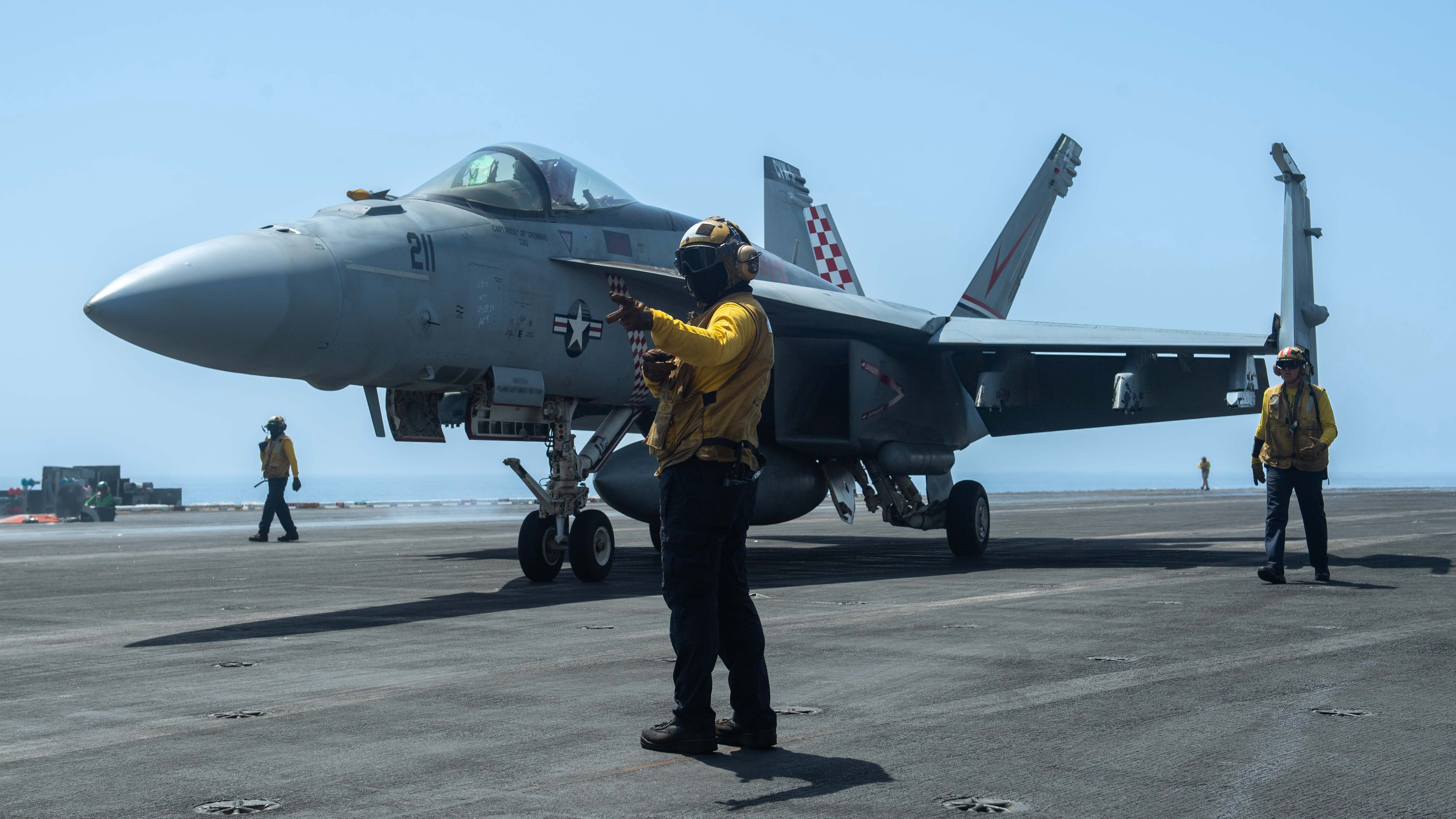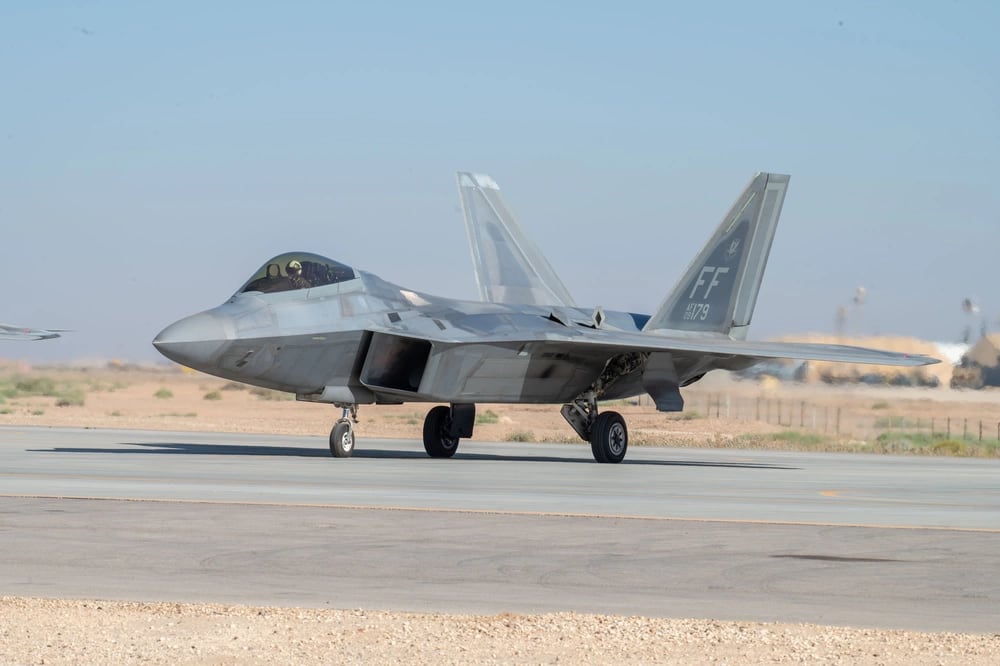The U.S. has kept an increased military presence in the Middle East throughout much of the past year, with about 40,000 forces, at least a dozen warships and four Air Force fighter jet squadrons spread across the region both to protect allies and to serve as a deterrent against attacks, several U.S. officials said.
As attacks between Israel and Hezbollah sharply spiked this week, worries are growing that the conflict could escalate into an all-out war, even as Tel Aviv keeps up its nearly yearlong fight against Hamas militants in Gaza.
Hezbollah says Israel crossed a “red line” with explosive attacks on its communications devices and vowed to keep up the missile strikes it’s launched since fellow Iranian-backed militant group Hamas attacked Israel on Oct. 7, setting off the war in Gaza.
Israeli Defense Minister Yoav Gallant — who has spoken repeatedly this week to U.S. Defense Secretary Lloyd Austin — has declared the start of a “new phase” of the war, shifting its focus to the northern front against Hezbollah in Lebanon.
So far, the U.S. hasn’t signaled a troop increase or change as a result of the latest attacks, and there is already a beefed-up force in the region.
“We’re confident in the ability that we have there right now to protect our forces and should we need to come to the defense of Israel as well,” Pentagon spokeswoman Sabrina Singh said Thursday.
A military official said the additional resources have helped as the U.S. patrols various conflict areas, including operations targeting the Islamic State group in Iraq and Syria, defending Israel and countering threats from Iranian-backed Houthi rebels in Yemen, who have targeted commercial ships in the Red Sea and launched ballistic missiles at Israel.
The officials spoke on condition of anonymity to describe U.S. troop movements and locations.
Here’s a look at the U.S. military presence in the Middle East:
Troops
Normally, about 34,000 U.S. forces are deployed to U.S. Central Command, which covers the entire Middle East. That troop level grew in the early months of the Israel-Hamas war to about 40,000 as additional ships and aircraft were sent in.
Several weeks ago, the total spiked to nearly 50,000 when Austin ordered two aircraft carriers and their accompanying warships to stay in the region as tensions roiled between Israel and Lebanon. One carrier strike group has since left and moved into the Asia-Pacific.
The beefed-up presence is designed both to help defend Israel and protect U.S. and allied personnel and assets.
Navy warships are scattered across the region, from the eastern Mediterranean Sea to the Gulf of Oman, and both Air Force and Navy fighter jets are strategically based at several locations to be better prepared to respond to any attacks.
Warships
The U.S. is back to one aircraft carrier in the region. Austin has extended the deployment of carriers several times in the past year so that on a few occasions, there has been the rare presence of two at once.
American military commanders have long argued that the presence of a formidable aircraft carrier — with its array of fighter jets and surveillance aircraft and sophisticated missiles — is a strong deterrent against Iran.
RELATED

The Abraham Lincoln and its three destroyers are in the Gulf of Oman, while two U.S. Navy destroyers are in the Red Sea. The Georgia guided missile submarine, which Austin ordered to the region last month, had been in the Red Sea and remains in U.S. Central Command, but officials declined to say where.
There are six U.S. warships in the eastern Mediterranean Sea, including the Wasp amphibious assault ship with the 26th Marine Expeditionary Unit aboard. And three Navy destroyers are in that area.
About a half dozen of the F/A-18 fighter jets from the Abraham Lincoln have been moved to a land base in the region. Officials declined to say where.
Aircraft
The Air Force sent in an additional squadron of advanced F-22 fighter jets last month, bringing the total number of land-based fighter squadrons in the Middle East to four.
That force also includes a squadron of A-10 Thunderbolt II ground attack aircraft, F-15E Strike Eagles and F-16 fighter jets. The Air Force is not identifying what countries the planes are operating from.

The addition of the F-22 fighter jets gives U.S. forces a hard-to-detect aircraft that has a sophisticated suite of sensors to suppress enemy air defenses and carry out electronic attacks. The F-22 also can act as a “quarterback,” organizing other warplanes in an operation.
But the U.S. also showed in February that it doesn’t have to have planes based in the Middle East to attack targets. In February, a pair of B-1 bombers took off from Dyess Air Force Base in Texas and flew more than 30 hours in a roundtrip mission in which they struck 85 Islamic Revolutionary Guards Corps Quds Force targets in Iraq and Syria in response to an attack by IRGC-backed militias that killed three U.S. service members.
Read the full article here
